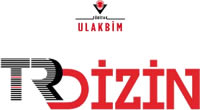Divriğili Ozanların Göç Olgusu (The Migration Phenomenon of Minstrels From Divriği)
DOI:
https://doi.org/10.15659/ankad.v7i1.235Anahtar Kelimeler:
Değişim- göç- âşıklık- gelenek- kentÖzet
Âşıklık/Ozanlık geleneği yüzyıllar boyunca usta-çırak ilişkisi ile aktarılarak hayatiyetini korumuş ve günümüze kadar süre gelmiştir. Geçmişten günümüze âşıklık/ozanlık geleneği farklı sebeplere bağlı olarak değişmelere uğramıştır. Sözlü kültür ortamının ürünü olan âşıklık/ozanlık geleneği, teknolojide yaşanan gelişmeler ile yazılı ve elektronik kültür ortamlarıyla tanışmış ve bu ortamlarda varlığını korumaya çalışmıştır. Bunun yanı sıra âşıklık/ozanlık geleneğini ve temsilcilerini etkileyen önemli unsurlardan bir diğeri ise göçtür. Âşıklar/ozanlar, kırsalın yaratmış olduğu bunalımdan kurtulmanın yolunu sanayileşmenin yoğunlaştığı kentlere göçmekle aramışlardır. İktisadi güçlükleri aşmak ve kaliteli bir yaşam için kente göç eden âşık/ozan, geleneği kent ortamında yaşatmaya çalışmıştır. Kent yaşamına tutunmaya çalışan âşık/ozan doğal olarak kent kültürü etkisinde kalmaya başlamış ve geleneğin yöresel üslubu kaybolmaya başlamıştır. Bu bağlamda göçün, Divriğili âşıklara/ozanlara etkisi ve bu etkiler sonucunda gerçekleşen kültürel değişimler araştırmanın konusunu oluştururken, Sivas Divriği yöresine mensup beş gelenek temsilcisi ise araştırmanın çalışma grubunu oluşturmaktadır. Bu gelenek temsilcileri ile gerçekleştirilen görüşme sonucunda elde edilen veriler betimsel analiz yöntemi ile bulgulara dönüştürülmüş ve bulgular ışığında araştırma sonuçları raporlaştırılmıştır.
Referanslar
Arslan, A. (2011). Medyanın birey, toplum ve kültür üzerine etkileri. Uluslararası İnsan Bilimleri Dergisi, 8(1), 1-12.
Artun, E. (2018). Âşıklık geleneği ve âşık edebiyatı. Adana: Karahan Kitabevi.
Bahar, H. İ. (2005). Sosyoloji. Ankara: Siyasal Yayınevi.
Büyüköztürk, Ş., Çakmak, E. K., Akgün, Ö. E., Karadeniz, Ş. & Demirel, F. (2014). Bilimsel araştırma yöntemleri, Ankara: Pegem Akademi.
Cemaloğlu, N. (2014). Veri toplama teknikleri: nicel-nitel. A. Tanrıöğen (Ed.) Bilimsel Araştırma Yöntemleri içinde (ss. 131-164). Ankara: Anı Yayıncılık.
Çakır, S. (2011). Geleneksel Türk kültüründe göç ve toplumsal değişme. SDÜ Fen Edebiyat Fakültesi Sosyal Bilimler Dergisi, (24), 129-142.
Çelikten, H. (2019). Âşıklık geleneği ve kültür değişimleri. (Yayınlanmış Doktora Tezi), Sivas Cumhuriyet Üniversitesi, Sivas.
Çetin, A.Y. (2011). Âşık tarzı şiir geleneği ve günümüze yansıyan unsurları-Sivas örneği. M.Ö. Oğuz ve S. Gürçayır (Ed.) Somut Olmayan Kültürel Miras Yaşayan Âşık Sanatı içinde (ss.43-58). Ankara: Grafiker Yayıncılık.
Emiroğlu, K. & Aydın, S. (2009). Antropoloji sözlüğü. Ankara: Bilim ve Sanat Yayınları.
Fedakar, P.D. & Gültekin, M. (2011). Kente göç eden âşıklar ve kent ortamında âşık olmak. M.Ö. Oğuz ve S. Gürçayır (Ed.) Somut Olmayan Kültürel Miras Yaşayan Âşık Sanatı içinde (ss.59-70). Ankara: Grafiker Yayıncılık.
Fichter, J, (2004). Sosyoloji nedir. (çev. N. Çelebi). Ankara: Anı Yayıncılık.
Günay, U. (2018). Âşık tarzı şiir geleneği ve rüya motifi. Ankara: Akçağ Yayıncılık.
Güvenç, B. (2007). Kültürün abc’si. İstanbul: Yapı Kredi Yayınları.
Karahasanoğlu, S. & Yavuz, E.D. (2018). Müzikte araştırma yöntemleri. İstanbul: Berceste Yayınevi.
Karakaya, İ. (2014). Bilimsel araştırma yöntemleri. A. Tanrıöğen (Ed.) Bilimsel Araştırma Yöntemleri içinde (ss. 55-84). Ankara: Anı Yayıncılık.
Karpat, H.K. (2019). Türkiye’de toplumsal dönüşüm. İstanbul: Timaş Yayınları.
Kaya, D. (2002). Çamşık ozanları. Ankara: Çamşık Hüseyin Abdal Derneği Yayınları.
Kongar, E. (2018). Toplumsal değişme kuramları ve Türkiye gerçeği. İstanbul: Remzi Kitabevi.
Ozankaya, Ö. (1992). Ulusal toplumun ve ulusal kültürün kurucu öğeleri. Ankara Üniversitesi Türk İnkılap Tarihi Enstitüsü Atatürk Yolu Dergisi, 3(10), 213-225.
Özdemir, N. (2015). Medya kültür ve edebiyat. Ankara: Grafiker Yayınları.
Özkalp, E. (2016). Sosyolojiye giriş. Bursa: Ekin Basım Yayın Dağıtım.
Taşlıova, M.M. (2014). Stüdyoya taşınan âşıklık veya ‘stüdyo tipi’ âşıklığa doğru sözlü ve dijital icra yapıları üzerine mukayese, Türkbilig, 27, 79-104.
Temürtürkan, D. (2021). Çamşıhı yöresi âşıklık geleneği içinde kadın âşık: Âşık Hatice Mihrap. Yegâh Mûsikî Dergisi, 4(1), 138-152.
Tural, S.K. (1988). Kültürel kimlik üzerine düşünceler. Ankara: Kültür ve Turizm Bakanlığı Yayınları.
Üçer, M. & Pekşen, F. (2001). Divriği’de mutfak kültürü. Sivas: Sivas Hizmet Vakfı Yayınları
Yayınlanmış
Nasıl Atıf Yapılır
Sayı
Bölüm
Lisans
Telif Hakkı (c) 2024 Anadolu Kültürel Araştırmalar Dergisi (ANKAD)

Bu çalışma Creative Commons Attribution-NonCommercial 4.0 International License ile lisanslanmıştır.













